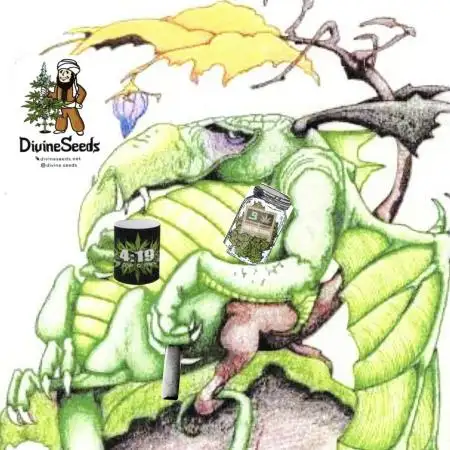By continuing to use the website or clicking Accept you consent to our cookies and personal data policy and confirm that you are at least 18 year old. For details please see Privacy Policy and Terms
Accept
Led lights
Flippinuggetstarted grow question 2d ago
In a tent 1m*1m*2m (3ft*3ft*7ft) will install 2*150w Mars hydro fc-1500 and one spider farmer 100w for 2 hydro and 2 soil pots.
Is the light setup good enough to give me a decent result or should I go with a single light of 400w?
Open
likes
Answer
Bigbudz802answered grow question 1d ago
Well this would be up to you , do you have some extra money laying around and what’s your goal great flower or to just make it through till the end of the. The led market has become pretty competitive and prices have lowered , to me if you have the cash I’d buy a bar led that gives great coverage corner to corner , don’t settle like stated before companies say a lot of things to sell products do some research watch some reviews get a light you won’t want or need to upgrade in a yr or by the next run . Hey or just run it and see what happens you can always adjust light height to get close to the numbers that matter ppfd/ dli . As long as your growing your learning so send it
likes
Complain
Ratleanswered grow question 1d ago
Seems like a small tent for 4 plants. I have same size and struggle with 2 but I LST and open them up. I use one SF 1000 and get 7 ounces of smoke
1 like
Complain
00110001001001111Oanswered grow question 1d ago
First, this is based on 12h operation. If doing autoflowers, you need 2/3rds of the umol/s PAR production of light over 18h (inversely proportional to hours of operation). Or, if oyu use any esoteric light schedule, same math to convert...
On paper, 2 FC 1500 should be enough on its own given ambient CO2. This depends on how much integrity mar's spec sheet has. (your busy work, not mine)
If you wanted to use all three for improved light distribution, you can run them below 100% power. This may significantly benefit the sf1000, lol, as it is overpowering too few diodes in a significant way. This will be mostly proportional to their listed output... still want ~860umol/s PAR between all three lights.
Since it's 3 lights and varying responsibilities of area of coverage, it makes it a bit wonky to distribute it as evenly as possible. All three lights at ~80% would do it, but the best configuration probably invovles an uneven power distribution. A light meter may be needed to optimize this array of lights as far as reducing hotspots, best coverage for sides and corners and not sacrificing overall average reading across entire canopy.
------------- Why?For 12 hour operation in s 1m^2 you need a total output of 860 umol/s of PAR.
FC 1500 -- 427 umol/s PAR
SF 1000 -- 200 umol/s PAR
The spider farmer spec sheet is fucked. It can't have the efficacy listed and only 199umol/s PAR (120 Volt power). So, that's a bad omen about trusting anything else they say. They "FC" models by mars used to be bad ass... i think they've cheapened up the diode count though? Their math needs to be double checked, too. If the diodes are not run at .2 watts per diode (specifically about lm301 diodes, refer to diode brand spec sheet for different models) on the mars fc1500, there's no way it's a 2.8-2.9 umol/J efficacy and the 427 value above is an exaggeration / lie.
So, you need to do some grunt work. Compare testing paramaters of diodes used from diode manufacturar. If the light is not operating at or near those power variables, the spec sheet of mars or aynone else is a bunch of lies and exaggeration.
LoL, that spider farmer light only has an efficacy of 2.0umol/J -- thats barely better than the old street lighting option (hps/cmh).
Low efficacy does not mean poor results. DLI is what matters there, regardless. What it does mean is more heat per watt produced, which may or may not be good, and higher electricity bills. Low efficacy just means higher cost than necessary. Small potatoes when talking about 1 or 2 small lights but increasingly more important as you add watts. If heat is an issue, efficacy can be important at 400watts. Depends on context.
it does mean they went really cheap making that light... in the past i recall much better lights from SF.
likes
Complain
m0useanswered grow question 2d ago
having three lights in the tent will generate some hot-spots so if you have a light meter it will help.
If you already have the lights no need to get a another. unless you have some fuck around money and want one.
The hydro ones might outgrow the soil ones. I would try and keep them all in the same medium/growing style or it can get weird.
likes
Complain
HighHolidaysanswered grow question 2d ago
Your current setup with 2×150 W Mars Hydro lights and a 100 W Spider Farmer (≈400 W total) is already ideal for a 1 m² tent. It gives you good light coverage and flexibility, so upgrading to a single 400 W fixture would only simplify your setup, not significantly increase yields. If you already own those lights, stick with them 2×150 W plus the 100 W Spider Farmer gives you around 400 W total, which is perfect for a 1 m² tent.
You’ll get good coverage and the flexibility to position them as needed. A single 400 W light would be simpler to manage, but it won’t noticeably boost yields, so there’s no need to buy a new one unless you just want to streamline your setup.
3 likes
Complain
Still_Smoqanswered grow question 2d ago
One light would be much easier to control and probably an overall better grow experience, than trying to deal with 3 different lights. As long as it’s a quality full spectrum LED.
likes
Complain












